Events
| Name | organizer | Where |
|---|---|---|
| MBCC “Doing Business with Mongolia seminar and Christmas Receptiom” Dec 10. 2025 London UK | MBCCI | London UK Goodman LLC |
NEWS
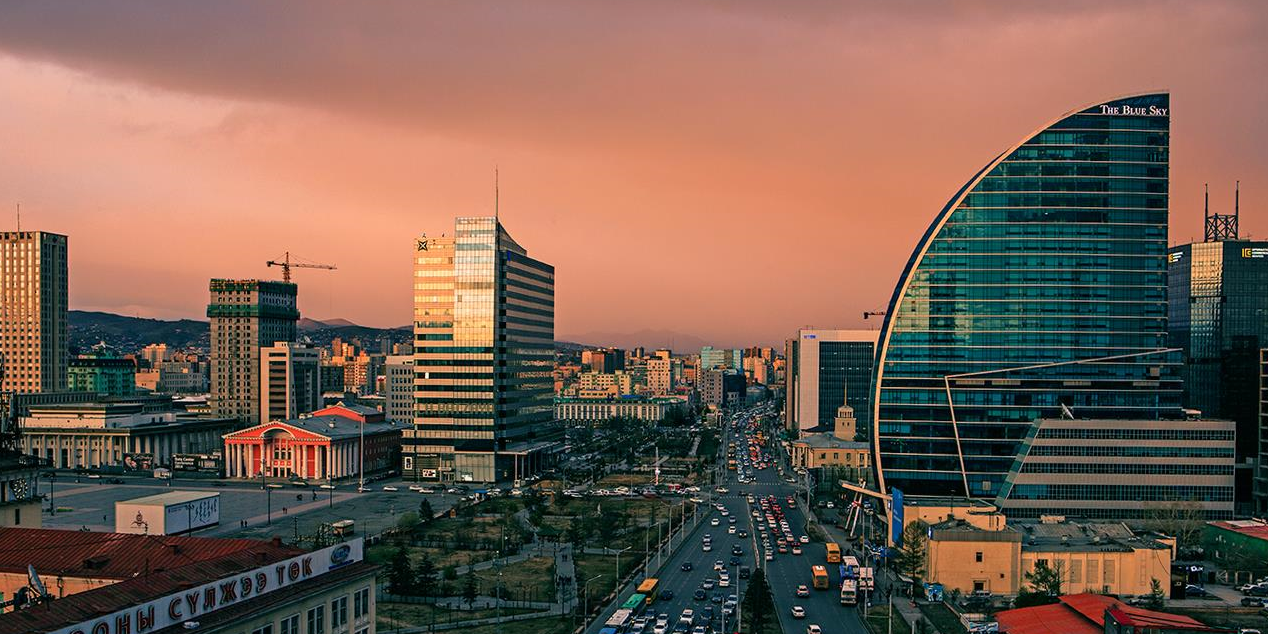
Mongolia to face Covid-19 economic impact from June www.news.mn
The UN’s trade and development agency says the slowdown in the global economy caused by the coronavirus outbreak is likely to cost at least $1 trillion. The recent outbreak of the novel coronavirus has affected the global industry logistics system. Specially, industries directly depend on China have shut down quickly as border restrictions and travel bans have come into force. However, the world has still not felt the real impact caused by the Covid-19 outbreak, explained economists. The great impact on the global economy will begin from mid-March and the sharp downturn of Chinese industries will continue in April, reported HBR.
Mongolia’s economy greatly depends on China and impacts of the Covid-19 outbreak will begin felt in the country from June, said the business analysts. So, Mongolia Government needs to evaluate the situation at the macroeconomic level and to amend its 2020 State Budget. The analysts warned that if the Government does not take the necessary measures quickly, Mongolia’s unemployment will hit 20 percent and nearly 250,000 people will lose their jobs by June.
According to the Mongolian National Chamber of Commerce and Industry, the economic impact of Covid-19 would be felt in Mongolia after 1-6 months as follows:
— In the trade sector after one month with the increasing price of imports.
– In exports after three months as Chinese industrial demand changes.
– In Mongolia’s GDP after six months.
The Mongolian economy fell by 5.2 percent as the Chinese economy decreased by 1.4 percent during the Sars outbreak. This year, China’s economy is expected to fall by 2 percent.
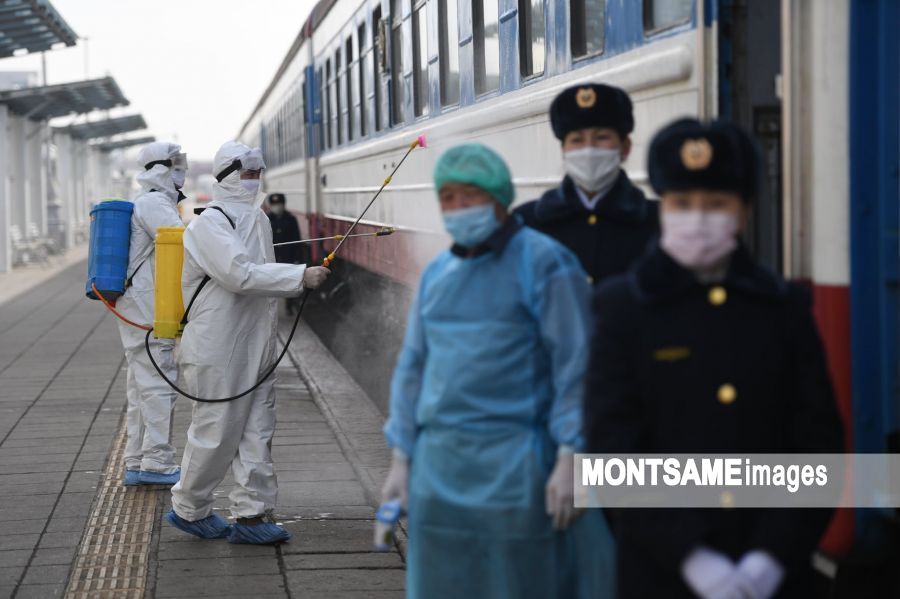
Passenger trains being decontaminated prior to their departures www.montsame.mn
Ulaanbaatar /MONTSAME/. Prior to their journeys, domestic trains of Ulaanbaatar Railway JSC are going under decontamination in both the interior and exterior. The body temperatures of passengers are also being checked every 2 hours.
Before its departure at 10.40 am, MONTSAME National News Agency became acquainted with the process of decontamination and temperature checks of the passengers on a train en route Ulaanbaatar-Sukhbaatar-Ulaanbaatar today on March 17. Doctor of Ulaanbaatar Railway Hospital I.Byambajav was going through the train, checking the body temperature of each passenger.
Officials highlighted that doctors of the hospital are doing check-ups for passengers being transported in all domestic routes as cautionary measures against the infection.
If a suspected case comes to surface, the doctor would immediately notify the conductor, isolate the citizen, and inform the corresponding organizations.
Furthermore, from those working at the ticket office that come in close contact with passengers to service attendants, staff and crew members are being provided with face masks and sanitizers as well as supplements to support their immune system. Decontamination is also being done at every station.
In correlation with the first case of coronavirus being recorded, the repetition of decontamination, as well as the amount of decontaminating agents, have been increased.

Fifth coronavirus case confirmed in Mongolia www.montsame.mn
Ulaanbaatar /MONTSAME/. On the evening of March 17, Tuesday, the Ministry of Health announced fifth confirmed coronavirus case in Mongolia.
The infected person is 30-year old female, who arrived from Italy via Germany on an evacuation flight from Berlin to Mongolia yesterday, March 16.
She has been staying in isolation at the National Center of Communicable Diseases in Ulaanbaatar and is in stable health condition.
Yesterday, March 16, the Ministry of Health reported three confirmed cases of coronavirus, including two passengers arrived on an evacuation flight from Seoul, South Korea and one person arrived on the chartered plane from Berlin, Germany.
The Ministry of Health officials informed that the newly confirmed patient is not identified to have had a close contact with the other patient, who is diagnosed with the coronavirus yesterday, as she was sitting far away from her on the same flight from Berlin.
The next charter flight to repatriate Mongolian nationals, who are living in coronavirus-affected countries and have reasonable excuses to return home, is scheduled to arrive from Istanbul on March 18, Wednesday.
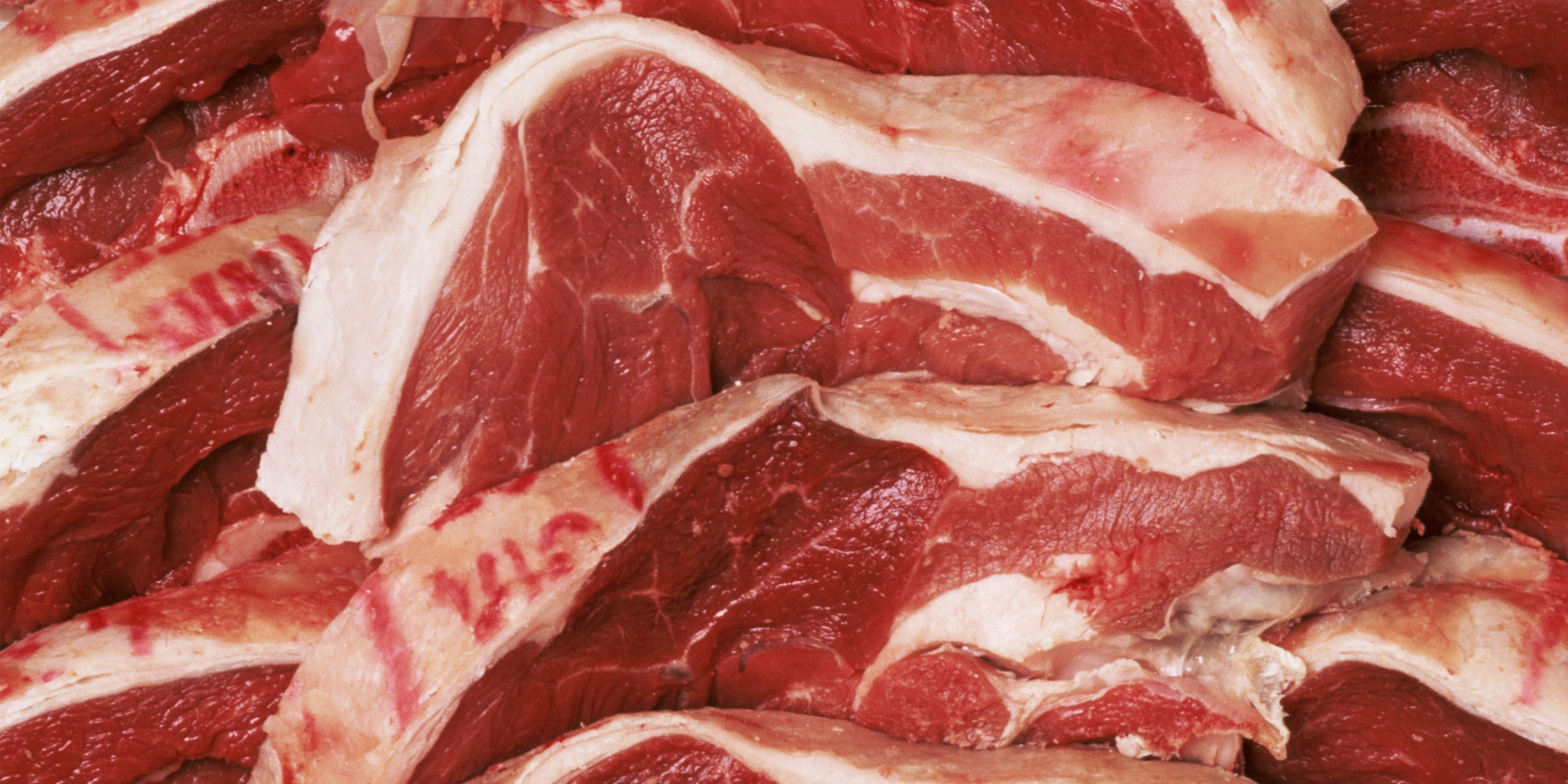
Mongolian State Department Store fined for ‘fixing’ meat prices www.news.mn
The Mongolian Government has warned businesses against ‘price gouging’ during the time of an advanced emergency readiness and preparation for preventing the spread of the killer coronavirus that has killed over 5800 people globally. As the epidemic spreads across the globe, people have been seen rushing to supermarkets to bulk buy ‘essentials’. This has become an opportunity for some unscrupulous to raise the price for their own ends.
Earlier today (17 March), the Authority for Fair Competition and Consumer Protection reported the results of an inspection at the State Department Store. According to officials, Nomin Tav Trade LLC which owns Mongolia’s most famous store, has been fined for MNT 20 million for artificially and illegally increasing the meat price. The prices of mutton and beef were increased by MNT1000-5000 per kg on 12-16 March.
Located on Peace Avenue, in central Ulaanbaatar, the State Department Store is Mongolia’s oldest such establishment. Established in 1921, it was one of the first large buildings in the city. Known simply in Mongolian as ‘ikh delguur’ (big shop), the State Department Store, is a local institution and virtually a tourist attraction in itself.
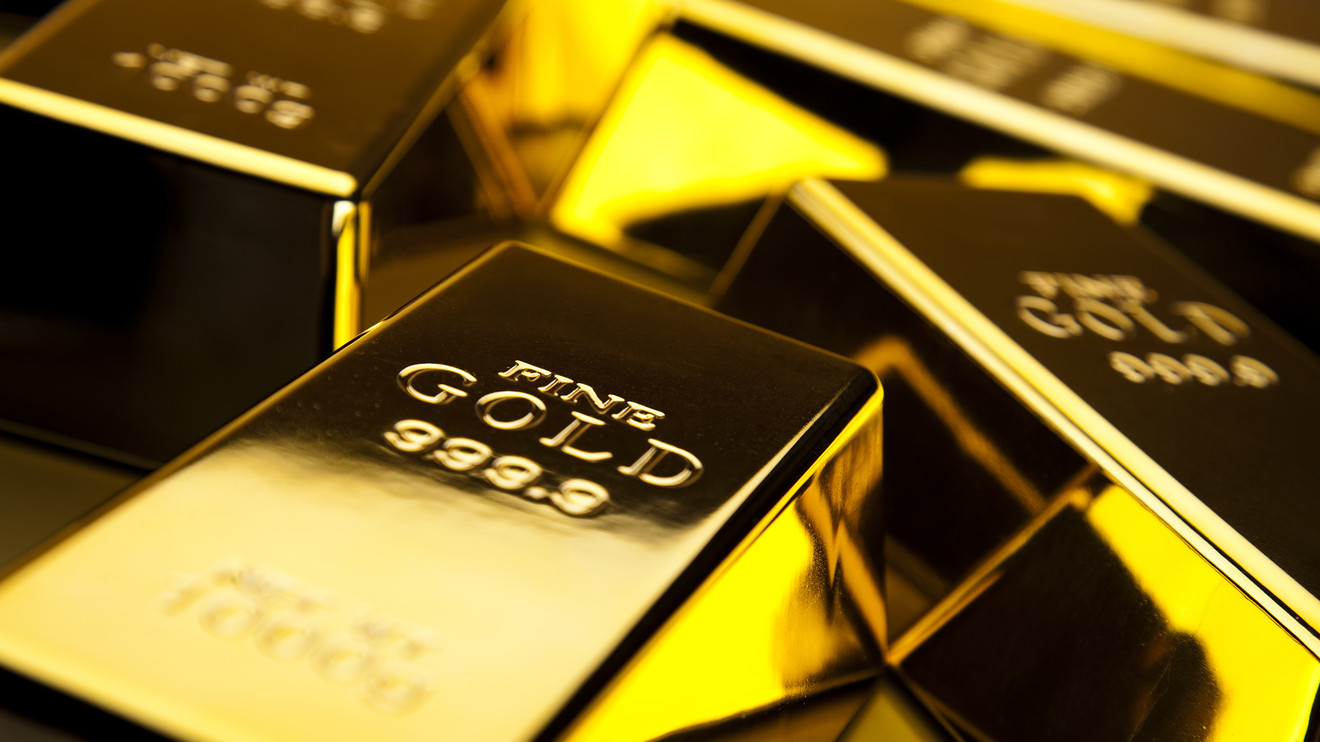
Mongolia’s gold purchase rises tenfold www.news.mn
The Central Bank of Mongolia, also know as Mongol Bank, purchased 952.6 kg of gold from legal entities and individuals in February, 2020; this is an increase of tenfold on the same month in 2019. This sharp rise of gold purchase came after Mongolia closed its border with China in order to prevent the spread of coronavirus.
If this continues, the Mongol Bank can set record for purchasing 24-25 tonnes of gold in the end of 2020. Previously, it had set record for purchasing 22 tonnes of gold in one year.
The 2.5 percent of discounted royalty on gold mining ended on 1 January 2019. Subsequently, 5 to 10 percent royalty taxes on gold mining have been imposed on miners, resulting in the Central Bank’s gold purchase being down 71.6 percent year-on-year in the period January-March 2019.

Mongolia forbids import of crashed cars www.news.mn
It has become common for crashed or damaged cars to be imported to Mongolia and then to be sold after having been repaired. According to statistics, 30 percent of car imports in Mongolia are of vehicles which are at least 20 years old. Many are no longer manufactured.
In December, the National Auto Transport Centre of Mongolia signed an important agreement with Japanese organizations handling car assessment. The agreement aims at establishing a database of car exports from Japan in order to prevent crashed or stolen cars ending up in Mongolia.
The agreement will come into effect from 1 April, 2020, after which, car buyers can track the origin of their vehicle and obtain other information.
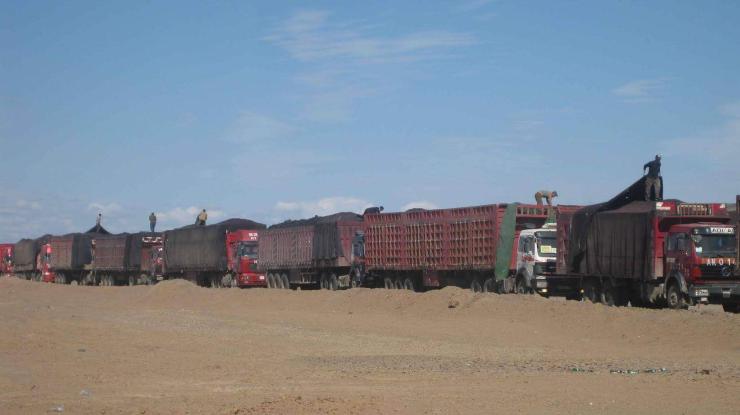
Emergency Commission postpones resumption of coal export shipment www.montsame.mn
Ulaanbaatar /MONTSAME/. Amid concerns over the novel coronavirus outbreak, the State Emergency Commission (SEC) resolved to put off coal and petroleum exports in February until March 15.
Beginning from March 4, heavy trucks loading coal started crossing the border only through Zamyn-Uud border checkpoint after being fully decontaminated.
Today, the State Emergency Commission convened and decided not to resume coal shipment through border checkpoints because of lack of preparedness at some of the border checkpoints. For instance, Head of the SEC U.Enkhtuvshin pointed that building of disinfection facilities at some checkpoints have not been finished yet and it needs to be made sure that drivers of the freight trucks are ready to launch the shipments as the drivers themselves first had requested to stop the shipments due to fears over the outbreak.
It was earlier reported that once the coal shipment resumes, some temporary regulations should be followed. In particular, only companies satisfying certain safety requirements for the vehicles and their drivers would be allowed to continue coal export shipments with daily limits are set on the number of freight vehicles to cross the checkpoint.

Mining ‘moderately exposed’ to effects of coronavirus www.mining.com
The metals and mining sector will be moderately exposed as a result of the ongoing coronavirus outbreak worldwide, said Moody’s in its latest report on global sectors based on data collected as of mid-March.
The fall in commodity prices will have an adverse effect on those in the industry. However, analysts at Moody’s believe many producers have improved since the last commodity slump in 2015-2016, which caused significant hardship for smaller, less-diversified companies and drove a steep rise in the number of defaults. Now, more global, higher-rated companies are in general better able to withstand a market downturn.
The global spread of coronavirus will slow economic growth significantly, which will, in turn, amplify its effect on several sectors, Moody’s asserts.
The firm recently revised its GDP growth forecasts for the advanced G-20 economies to 1.0% in 2020, down from 1.7% in 2019, and for the emerging G-20 to 3.8% in 2020, down from 4.2% in 2019, including a substantive slowdown in China. The baseline scenario assumes a normalization of economic activity in the second half of the year.
Moody’s cautions that the ability of some companies to withstand the effects of the virus will depend on its duration, and as events unfold on a daily basis, there is a higher than usual degree of uncertainty around its forecasts and assessment will evolve over time with new developments.
The following chart details the level of exposure for the major sectors around the world based on Moody’s research.
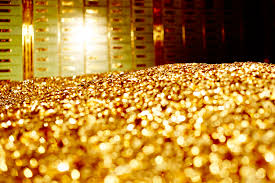
Gold price rebounds – biggest rally since June 2016 www.mining.com
The gold price surged on Tuesday after the latest action by the US Federal Reserve to shore up financial markets and the announcement of a massive stimulus program by the Trump administration convinced investors that the metal’s status as a safe haven asset and inflation hedge remains intact.
The gold price jumped out of the gate on the Comex market in New York, touching a high of $1,554.30, up $67.80 an ounce, or 4.6% compared to Monday’s close. That was the biggest one-day gain since June 2016, when Brits voted to leave the European Union.
Bob Haberkorn, senior market strategist, RJO Futures
Gold has been on a wild ride over the past week, dropping as low as $1,450 an ounce Monday – a $250 an ounce slide after briefly hitting a seven-year high above $1,700 a week earlier.
“The fact that the Fed is stepping in, they are putting out more liquidity in the market, has helped gold to trade higher. Gold is starting to act like how it should act,” said Bob Haberkorn, senior market strategist at RJO Futures.
Gold usually performs well in an environment of rising inflation expectations, ultra-loose monetary policy and falling interest rates.
On Tuesday the Fed announced a restart to a 2008 financial crisis-era purchasing program of short-term corporate debt while an economic assistance package of more than $800 billion marked a shift by the White House towards a more aggressive response to the pandemic.
A wave of global central bank stimulus, including an emergency rate cut to zero by the Fed, and a pledge from leaders of the G7 nations to do whatever is necessary to respond to a global slowdown, have also bolstered gold’s prospects.
Bargain hunting
“Gold has got a lot of fundamental factors behind it to help drive it higher. Plus, you do have the technical aspect of it given the drawdown we had over the past two days,” Michael Matousek, head trader at US Global Investors told Reuters.
“It is a great opportunity for people to enter into the gold market.”
Goldman Sachs analysts said in a note that “in the near term, the gold price is likely to remain volatile as it tries to find a new equilibrium.”
(With files from Reuters)
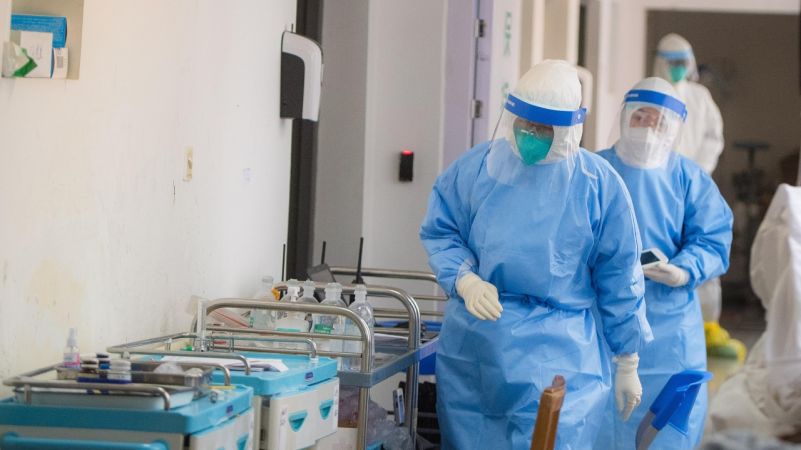
Three citizens that arrived on charter flights test positive for COVID-19 www.montsame.mn
Ulaanbaatar /MONTSAME/. Three Mongolian citizens that arrived in Mongolia on the charter flights en route Seoul-Ulaanbaatar, and Berlin-Ulaanbaatar have tested positive for COVID-19 from the preliminary laboratory tests. The Ministry of Health informed about the situation at its urgent announcement yesterday on March 16 at 10.50 pm.
Head of the Public Administration Department of the Ministry of Health B.Tsogtbaatar noted that the necessary health care assistance and services are being provided to those who have contacted the virus, and all people who were in close contact with them are currently being determined. He said, “The woman who arrived from France through Germany is in a serious state, and all necessary health care measures are being taken. Nine citizens who have been in close contact have been put into isolation. As it has been previously considered that repatriating our citizens from coronavirus affected countries brings risk, each citizen has been put into isolation as appropriate measures had been prepared beforehand.”
The test results of the three citizens were determined on March 16 at 8 pm, of which the other two arrived from the Republic of Korea.
At the State Emergency Commission’s meeting, a decision was made to repatriate citizens currently residing in the Republic of Korea, Japan as well as other countries that are in urgent need to return to their home country. In its framework, 244 citizens arrived on a charter flight en route Seoul-Ulaanbaatar on March 15. Another 231 citizens also arrived on a charter flight en route Berlin-Moscow-Ulaanbaatar yesterday on March 16 at around 8 am. The next charter flight that is to bring Mongolian citizens from Istanbul, Turkey will depart on March 18.
- «
- 1
- 2
- 3
- 4
- 5
- 6
- 7
- 8
- 9
- 10
- 11
- 12
- 13
- 14
- 15
- 16
- 17
- 18
- 19
- 20
- 21
- 22
- 23
- 24
- 25
- 26
- 27
- 28
- 29
- 30
- 31
- 32
- 33
- 34
- 35
- 36
- 37
- 38
- 39
- 40
- 41
- 42
- 43
- 44
- 45
- 46
- 47
- 48
- 49
- 50
- 51
- 52
- 53
- 54
- 55
- 56
- 57
- 58
- 59
- 60
- 61
- 62
- 63
- 64
- 65
- 66
- 67
- 68
- 69
- 70
- 71
- 72
- 73
- 74
- 75
- 76
- 77
- 78
- 79
- 80
- 81
- 82
- 83
- 84
- 85
- 86
- 87
- 88
- 89
- 90
- 91
- 92
- 93
- 94
- 95
- 96
- 97
- 98
- 99
- 100
- 101
- 102
- 103
- 104
- 105
- 106
- 107
- 108
- 109
- 110
- 111
- 112
- 113
- 114
- 115
- 116
- 117
- 118
- 119
- 120
- 121
- 122
- 123
- 124
- 125
- 126
- 127
- 128
- 129
- 130
- 131
- 132
- 133
- 134
- 135
- 136
- 137
- 138
- 139
- 140
- 141
- 142
- 143
- 144
- 145
- 146
- 147
- 148
- 149
- 150
- 151
- 152
- 153
- 154
- 155
- 156
- 157
- 158
- 159
- 160
- 161
- 162
- 163
- 164
- 165
- 166
- 167
- 168
- 169
- 170
- 171
- 172
- 173
- 174
- 175
- 176
- 177
- 178
- 179
- 180
- 181
- 182
- 183
- 184
- 185
- 186
- 187
- 188
- 189
- 190
- 191
- 192
- 193
- 194
- 195
- 196
- 197
- 198
- 199
- 200
- 201
- 202
- 203
- 204
- 205
- 206
- 207
- 208
- 209
- 210
- 211
- 212
- 213
- 214
- 215
- 216
- 217
- 218
- 219
- 220
- 221
- 222
- 223
- 224
- 225
- 226
- 227
- 228
- 229
- 230
- 231
- 232
- 233
- 234
- 235
- 236
- 237
- 238
- 239
- 240
- 241
- 242
- 243
- 244
- 245
- 246
- 247
- 248
- 249
- 250
- 251
- 252
- 253
- 254
- 255
- 256
- 257
- 258
- 259
- 260
- 261
- 262
- 263
- 264
- 265
- 266
- 267
- 268
- 269
- 270
- 271
- 272
- 273
- 274
- 275
- 276
- 277
- 278
- 279
- 280
- 281
- 282
- 283
- 284
- 285
- 286
- 287
- 288
- 289
- 290
- 291
- 292
- 293
- 294
- 295
- 296
- 297
- 298
- 299
- 300
- 301
- 302
- 303
- 304
- 305
- 306
- 307
- 308
- 309
- 310
- 311
- 312
- 313
- 314
- 315
- 316
- 317
- 318
- 319
- 320
- 321
- 322
- 323
- 324
- 325
- 326
- 327
- 328
- 329
- 330
- 331
- 332
- 333
- 334
- 335
- 336
- 337
- 338
- 339
- 340
- 341
- 342
- 343
- 344
- 345
- 346
- 347
- 348
- 349
- 350
- 351
- 352
- 353
- 354
- 355
- 356
- 357
- 358
- 359
- 360
- 361
- 362
- 363
- 364
- 365
- 366
- 367
- 368
- 369
- 370
- 371
- 372
- 373
- 374
- 375
- 376
- 377
- 378
- 379
- 380
- 381
- 382
- 383
- 384
- 385
- 386
- 387
- 388
- 389
- 390
- 391
- 392
- 393
- 394
- 395
- 396
- 397
- 398
- 399
- 400
- 401
- 402
- 403
- 404
- 405
- 406
- 407
- 408
- 409
- 410
- 411
- 412
- 413
- 414
- 415
- 416
- 417
- 418
- 419
- 420
- 421
- 422
- 423
- 424
- 425
- 426
- 427
- 428
- 429
- 430
- 431
- 432
- 433
- 434
- 435
- 436
- 437
- 438
- 439
- 440
- 441
- 442
- 443
- 444
- 445
- 446
- 447
- 448
- 449
- 450
- 451
- 452
- 453
- 454
- 455
- 456
- 457
- 458
- 459
- 460
- 461
- 462
- 463
- 464
- 465
- 466
- 467
- 468
- 469
- 470
- 471
- 472
- 473
- 474
- 475
- 476
- 477
- 478
- 479
- 480
- 481
- 482
- 483
- 484
- 485
- 486
- 487
- 488
- 489
- 490
- 491
- 492
- 493
- 494
- 495
- 496
- 497
- 498
- 499
- 500
- 501
- 502
- 503
- 504
- 505
- 506
- 507
- 508
- 509
- 510
- 511
- 512
- 513
- 514
- 515
- 516
- 517
- 518
- 519
- 520
- 521
- 522
- 523
- 524
- 525
- 526
- 527
- 528
- 529
- 530
- 531
- 532
- 533
- 534
- 535
- 536
- 537
- 538
- 539
- 540
- 541
- 542
- 543
- 544
- 545
- 546
- 547
- 548
- 549
- 550
- 551
- 552
- 553
- 554
- 555
- 556
- 557
- 558
- 559
- 560
- 561
- 562
- 563
- 564
- 565
- 566
- 567
- 568
- 569
- 570
- 571
- 572
- 573
- 574
- 575
- 576
- 577
- 578
- 579
- 580
- 581
- 582
- 583
- 584
- 585
- 586
- 587
- 588
- 589
- 590
- 591
- 592
- 593
- 594
- 595
- 596
- 597
- 598
- 599
- 600
- 601
- 602
- 603
- 604
- 605
- 606
- 607
- 608
- 609
- 610
- 611
- 612
- 613
- 614
- 615
- 616
- 617
- 618
- 619
- 620
- 621
- 622
- 623
- 624
- 625
- 626
- 627
- 628
- 629
- 630
- 631
- 632
- 633
- 634
- 635
- 636
- 637
- 638
- 639
- 640
- 641
- 642
- 643
- 644
- 645
- 646
- 647
- 648
- 649
- 650
- 651
- 652
- 653
- 654
- 655
- 656
- 657
- 658
- 659
- 660
- 661
- 662
- 663
- 664
- 665
- 666
- 667
- 668
- 669
- 670
- 671
- 672
- 673
- 674
- 675
- 676
- 677
- 678
- 679
- 680
- 681
- 682
- 683
- 684
- 685
- 686
- 687
- 688
- 689
- 690
- 691
- 692
- 693
- 694
- 695
- 696
- 697
- 698
- 699
- 700
- 701
- 702
- 703
- 704
- 705
- 706
- 707
- 708
- 709
- 710
- 711
- 712
- 713
- 714
- 715
- 716
- 717
- 718
- 719
- 720
- 721
- 722
- 723
- 724
- 725
- 726
- 727
- 728
- 729
- 730
- 731
- 732
- 733
- 734
- 735
- 736
- 737
- 738
- 739
- 740
- 741
- 742
- 743
- 744
- 745
- 746
- 747
- 748
- 749
- 750
- 751
- 752
- 753
- 754
- 755
- 756
- 757
- 758
- 759
- 760
- 761
- 762
- 763
- 764
- 765
- 766
- 767
- 768
- 769
- 770
- 771
- 772
- 773
- 774
- 775
- 776
- 777
- 778
- 779
- 780
- 781
- 782
- 783
- 784
- 785
- 786
- 787
- 788
- 789
- 790
- 791
- 792
- 793
- 794
- 795
- 796
- 797
- 798
- 799
- 800
- 801
- 802
- 803
- 804
- 805
- 806
- 807
- 808
- 809
- 810
- 811
- 812
- 813
- 814
- 815
- 816
- 817
- 818
- 819
- 820
- 821
- 822
- 823
- 824
- 825
- 826
- 827
- 828
- 829
- 830
- 831
- 832
- 833
- 834
- 835
- 836
- 837
- 838
- 839
- 840
- 841
- 842
- 843
- 844
- 845
- 846
- 847
- 848
- 849
- 850
- 851
- 852
- 853
- 854
- 855
- 856
- 857
- 858
- 859
- 860
- 861
- 862
- 863
- 864
- 865
- 866
- 867
- 868
- 869
- 870
- 871
- 872
- 873
- 874
- 875
- 876
- 877
- 878
- 879
- 880
- 881
- 882
- 883
- 884
- 885
- 886
- 887
- 888
- 889
- 890
- 891
- 892
- 893
- 894
- 895
- 896
- 897
- 898
- 899
- 900
- 901
- 902
- 903
- 904
- 905
- 906
- 907
- 908
- 909
- 910
- 911
- 912
- 913
- 914
- 915
- 916
- 917
- 918
- 919
- 920
- 921
- 922
- 923
- 924
- 925
- 926
- 927
- 928
- 929
- 930
- 931
- 932
- 933
- 934
- 935
- 936
- 937
- 938
- 939
- 940
- 941
- 942
- 943
- 944
- 945
- 946
- 947
- 948
- 949
- 950
- 951
- 952
- 953
- 954
- 955
- 956
- 957
- 958
- 959
- 960
- 961
- 962
- 963
- 964
- 965
- 966
- 967
- 968
- 969
- 970
- 971
- 972
- 973
- 974
- 975
- 976
- 977
- 978
- 979
- 980
- 981
- 982
- 983
- 984
- 985
- 986
- 987
- 988
- 989
- 990
- 991
- 992
- 993
- 994
- 995
- 996
- 997
- 998
- 999
- 1000
- 1001
- 1002
- 1003
- 1004
- 1005
- 1006
- 1007
- 1008
- 1009
- 1010
- 1011
- 1012
- 1013
- 1014
- 1015
- 1016
- 1017
- 1018
- 1019
- 1020
- 1021
- 1022
- 1023
- 1024
- 1025
- 1026
- 1027
- 1028
- 1029
- 1030
- 1031
- 1032
- 1033
- 1034
- 1035
- 1036
- 1037
- 1038
- 1039
- 1040
- 1041
- 1042
- 1043
- 1044
- 1045
- 1046
- 1047
- 1048
- 1049
- 1050
- 1051
- 1052
- 1053
- 1054
- 1055
- 1056
- 1057
- 1058
- 1059
- 1060
- 1061
- 1062
- 1063
- 1064
- 1065
- 1066
- 1067
- 1068
- 1069
- 1070
- 1071
- 1072
- 1073
- 1074
- 1075
- 1076
- 1077
- 1078
- 1079
- 1080
- 1081
- 1082
- 1083
- 1084
- 1085
- 1086
- 1087
- 1088
- 1089
- 1090
- 1091
- 1092
- 1093
- 1094
- 1095
- 1096
- 1097
- 1098
- 1099
- 1100
- 1101
- 1102
- 1103
- 1104
- 1105
- 1106
- 1107
- 1108
- 1109
- 1110
- 1111
- 1112
- 1113
- 1114
- 1115
- 1116
- 1117
- 1118
- 1119
- 1120
- 1121
- 1122
- 1123
- 1124
- 1125
- 1126
- 1127
- 1128
- 1129
- 1130
- 1131
- 1132
- 1133
- 1134
- 1135
- 1136
- 1137
- 1138
- 1139
- 1140
- 1141
- 1142
- 1143
- 1144
- 1145
- 1146
- 1147
- 1148
- 1149
- 1150
- 1151
- 1152
- 1153
- 1154
- 1155
- 1156
- 1157
- 1158
- 1159
- 1160
- 1161
- 1162
- 1163
- 1164
- 1165
- 1166
- 1167
- 1168
- 1169
- 1170
- 1171
- 1172
- 1173
- 1174
- 1175
- 1176
- 1177
- 1178
- 1179
- 1180
- 1181
- 1182
- 1183
- 1184
- 1185
- 1186
- 1187
- 1188
- 1189
- 1190
- 1191
- 1192
- 1193
- 1194
- 1195
- 1196
- 1197
- 1198
- 1199
- 1200
- 1201
- 1202
- 1203
- 1204
- 1205
- 1206
- 1207
- 1208
- 1209
- 1210
- 1211
- 1212
- 1213
- 1214
- 1215
- 1216
- 1217
- 1218
- 1219
- 1220
- 1221
- 1222
- 1223
- 1224
- 1225
- 1226
- 1227
- 1228
- 1229
- 1230
- 1231
- 1232
- 1233
- 1234
- 1235
- 1236
- 1237
- 1238
- 1239
- 1240
- 1241
- 1242
- 1243
- 1244
- 1245
- 1246
- 1247
- 1248
- 1249
- 1250
- 1251
- 1252
- 1253
- 1254
- 1255
- 1256
- 1257
- 1258
- 1259
- 1260
- 1261
- 1262
- 1263
- 1264
- 1265
- 1266
- 1267
- 1268
- 1269
- 1270
- 1271
- 1272
- 1273
- 1274
- 1275
- 1276
- 1277
- 1278
- 1279
- 1280
- 1281
- 1282
- 1283
- 1284
- 1285
- 1286
- 1287
- 1288
- 1289
- 1290
- 1291
- 1292
- 1293
- 1294
- 1295
- 1296
- 1297
- 1298
- 1299
- 1300
- 1301
- 1302
- 1303
- 1304
- 1305
- 1306
- 1307
- 1308
- 1309
- 1310
- 1311
- 1312
- 1313
- 1314
- 1315
- 1316
- 1317
- 1318
- 1319
- 1320
- 1321
- 1322
- 1323
- 1324
- 1325
- 1326
- 1327
- 1328
- 1329
- 1330
- 1331
- 1332
- 1333
- 1334
- 1335
- 1336
- 1337
- 1338
- 1339
- 1340
- 1341
- 1342
- 1343
- 1344
- 1345
- 1346
- 1347
- 1348
- 1349
- 1350
- 1351
- 1352
- 1353
- 1354
- 1355
- 1356
- 1357
- 1358
- 1359
- 1360
- 1361
- 1362
- 1363
- 1364
- 1365
- 1366
- 1367
- 1368
- 1369
- 1370
- 1371
- 1372
- 1373
- 1374
- 1375
- 1376
- 1377
- 1378
- 1379
- 1380
- 1381
- 1382
- 1383
- 1384
- 1385
- 1386
- 1387
- 1388
- 1389
- 1390
- 1391
- 1392
- 1393
- 1394
- 1395
- 1396
- 1397
- 1398
- 1399
- 1400
- 1401
- 1402
- 1403
- 1404
- 1405
- 1406
- 1407
- 1408
- 1409
- 1410
- 1411
- 1412
- 1413
- 1414
- 1415
- 1416
- 1417
- 1418
- 1419
- 1420
- 1421
- 1422
- 1423
- 1424
- 1425
- 1426
- 1427
- 1428
- 1429
- 1430
- 1431
- 1432
- 1433
- 1434
- 1435
- 1436
- 1437
- 1438
- 1439
- 1440
- 1441
- 1442
- 1443
- 1444
- 1445
- 1446
- 1447
- 1448
- 1449
- 1450
- 1451
- 1452
- 1453
- 1454
- 1455
- 1456
- 1457
- 1458
- 1459
- 1460
- 1461
- 1462
- 1463
- 1464
- 1465
- 1466
- 1467
- 1468
- 1469
- 1470
- 1471
- 1472
- 1473
- 1474
- 1475
- 1476
- 1477
- 1478
- 1479
- 1480
- 1481
- 1482
- 1483
- 1484
- 1485
- 1486
- 1487
- 1488
- 1489
- 1490
- 1491
- 1492
- 1493
- 1494
- 1495
- 1496
- 1497
- 1498
- 1499
- 1500
- 1501
- 1502
- 1503
- 1504
- 1505
- 1506
- 1507
- 1508
- 1509
- 1510
- 1511
- 1512
- 1513
- 1514
- 1515
- 1516
- 1517
- 1518
- 1519
- 1520
- 1521
- 1522
- 1523
- 1524
- 1525
- 1526
- 1527
- 1528
- 1529
- 1530
- 1531
- 1532
- 1533
- 1534
- 1535
- 1536
- 1537
- 1538
- 1539
- 1540
- 1541
- 1542
- 1543
- 1544
- 1545
- 1546
- 1547
- 1548
- 1549
- 1550
- 1551
- 1552
- 1553
- 1554
- 1555
- 1556
- 1557
- 1558
- 1559
- 1560
- 1561
- 1562
- 1563
- 1564
- 1565
- 1566
- 1567
- 1568
- 1569
- 1570
- 1571
- 1572
- 1573
- 1574
- 1575
- 1576
- 1577
- 1578
- 1579
- 1580
- 1581
- 1582
- 1583
- 1584
- 1585
- 1586
- 1587
- 1588
- 1589
- 1590
- 1591
- 1592
- 1593
- 1594
- 1595
- 1596
- 1597
- 1598
- 1599
- 1600
- 1601
- 1602
- 1603
- 1604
- 1605
- 1606
- 1607
- 1608
- 1609
- 1610
- 1611
- 1612
- 1613
- 1614
- 1615
- 1616
- 1617
- 1618
- 1619
- 1620
- 1621
- 1622
- 1623
- 1624
- 1625
- 1626
- 1627
- 1628
- 1629
- 1630
- 1631
- 1632
- 1633
- 1634
- 1635
- 1636
- 1637
- 1638
- 1639
- 1640
- 1641
- 1642
- 1643
- 1644
- 1645
- 1646
- 1647
- 1648
- 1649
- 1650
- 1651
- 1652
- 1653
- 1654
- 1655
- 1656
- 1657
- 1658
- 1659
- 1660
- 1661
- 1662
- 1663
- 1664
- 1665
- 1666
- 1667
- 1668
- 1669
- 1670
- 1671
- 1672
- 1673
- 1674
- 1675
- 1676
- 1677
- 1678
- 1679
- 1680
- 1681
- 1682
- 1683
- 1684
- 1685
- 1686
- 1687
- 1688
- 1689
- 1690
- 1691
- 1692
- 1693
- 1694
- »






